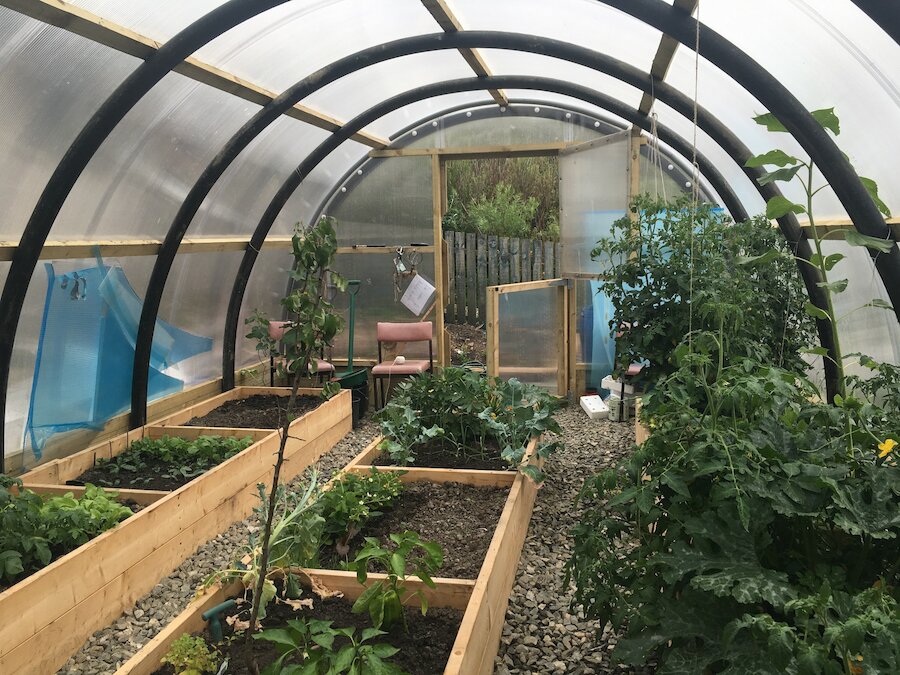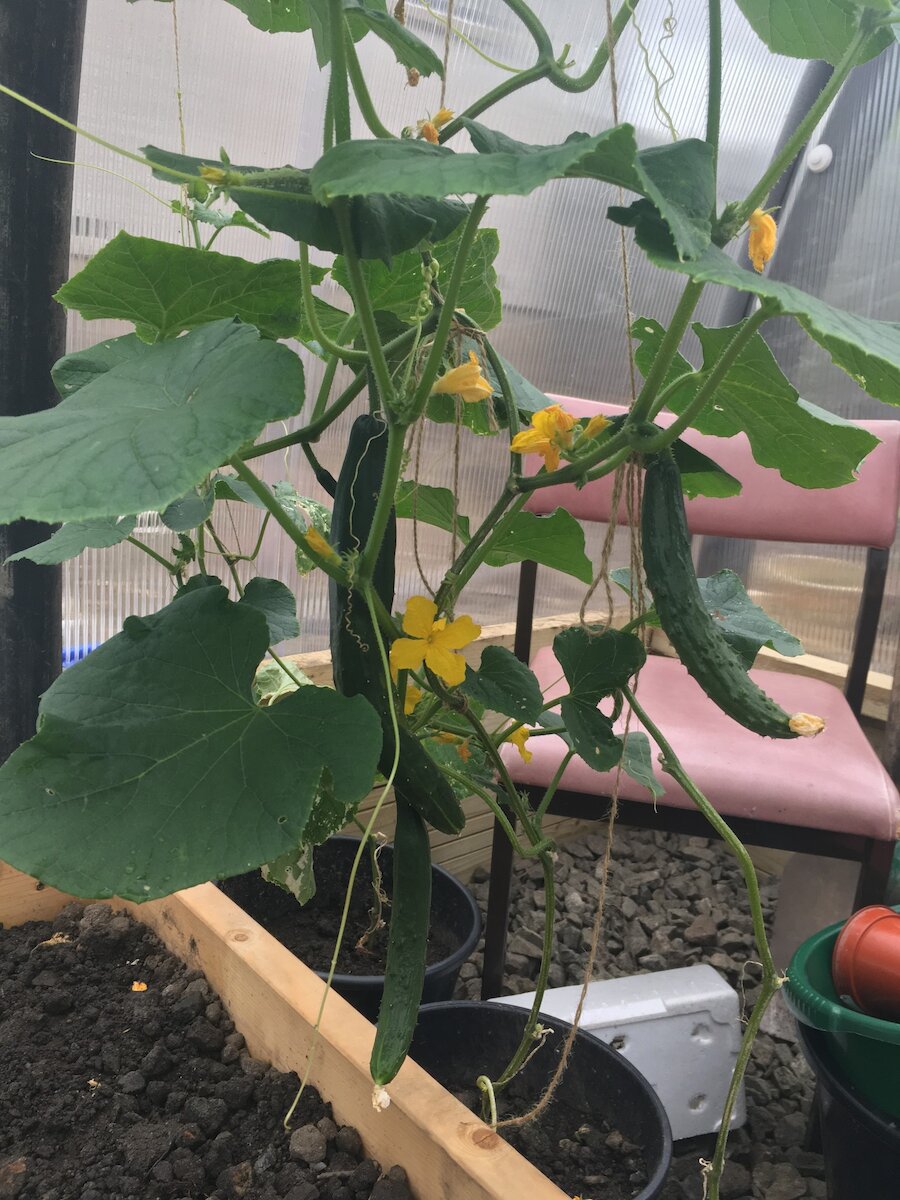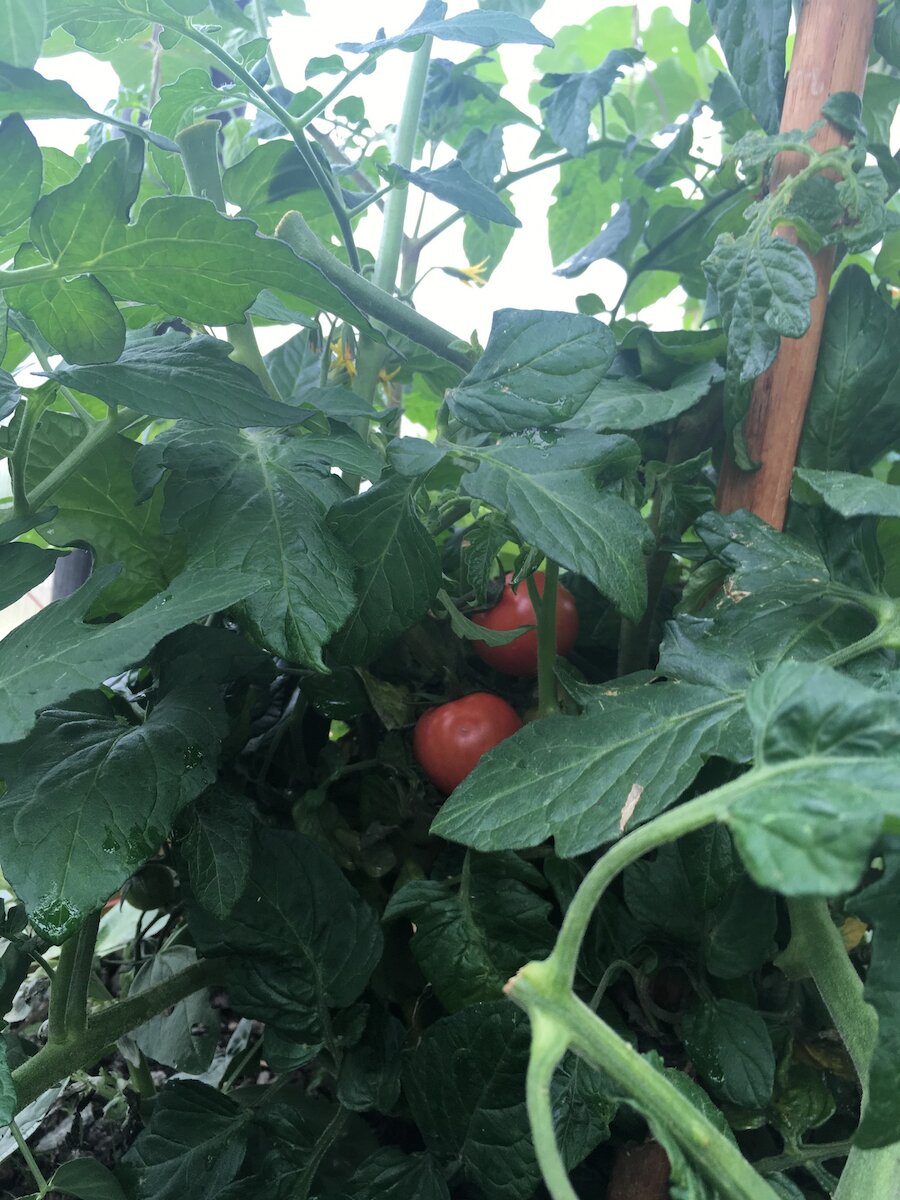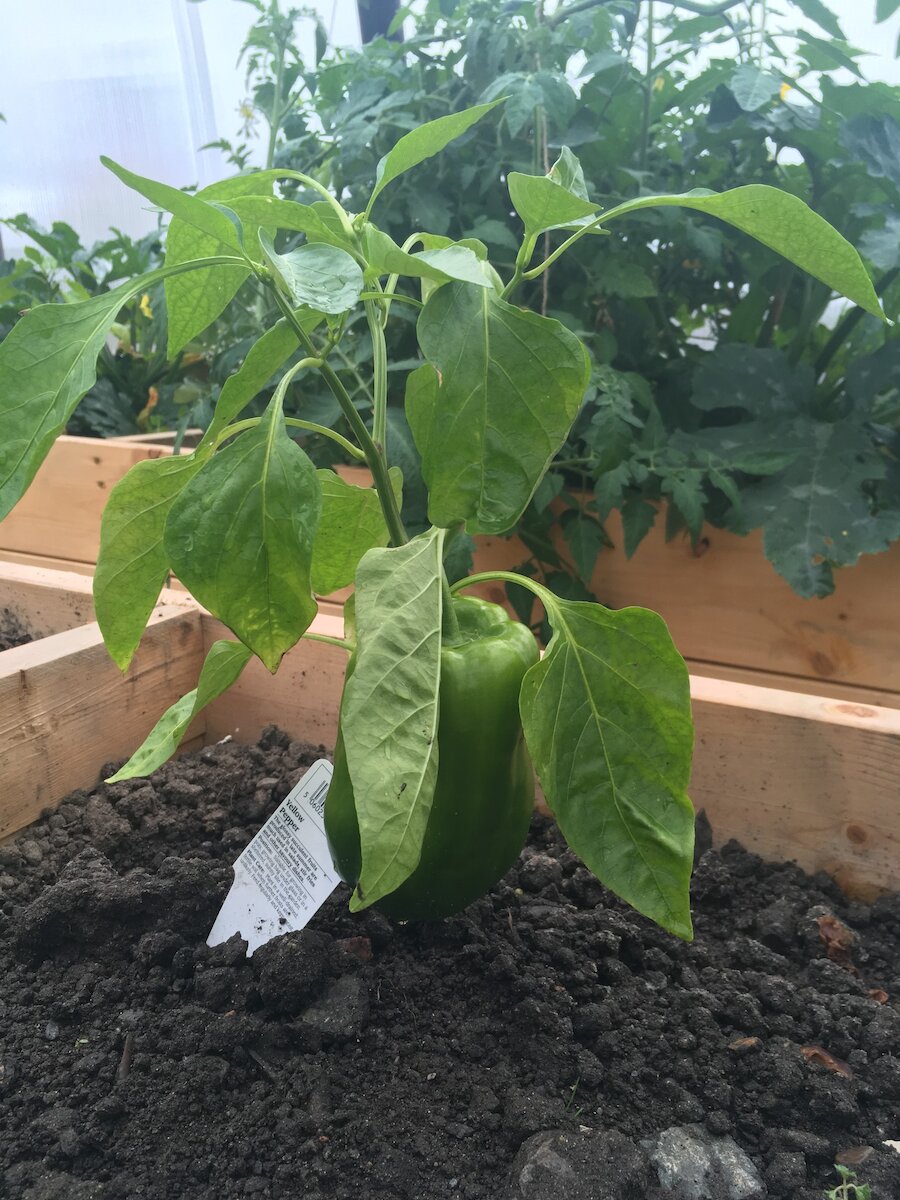Patients and Doctors in the northerly village of Hillswick have been getting green fingered in a new community Polycrub scheme, hosted by the local health centre. Lauren Doughton headed north to meet with local GP Susan Bowie, and see what has been going on.
In the far north of the Shetland Mainland, in the little village of Hillswick, local GPs and their patients have come together to grow fruit, veg and a whole range of other produce, in a newly constructed Polycrub (a polytunnel/greenhouse structure) built on the health centre land. Created locally by Northmavine company 'Nortenergy’, Polycrubs are the strongman of polytunnels. Constructed using recycled salmon farm piping, they are robust enough to withstand even the fiercest of Shetland gales (for more information about Polycrubs see our earlier blog post).
Susan was inspired to establish the health centre Polycrub after her own experience undergoing treatment for cancer in Glasgow. Finding herself at a loose end during treatment, a chance conversation on a park bench in the botanical gardens led to her to volunteer, helping out with weeding in between treatments. She also spent time helping a recently bereaved friend out with her allotment and describes the process as extremely therapeutic.
She explains, "Because I was going for radiotherapy in Glasgow, I had all this time to kill, and it was really good, really therapeutic. It’s not a very nice thing going for treatment, but I don’t have any bad memories of it at all, because I had something to come away with."
Returning to Shetland, she enlisted the help of fellow doctor Andy Muir and his wife Pam to establish the Polycrub on land next door to the surgery.
Initiatives such as this are a key part of the role of community health centres, argues Bowie.
"Health Centres should not just be about illness, they should be about health, and health promotion, and I think that this is win-win. You’re getting out, you’re getting out and about, you’re meeting other people. It’s a long-term thing." - Dr Susan Bowie
Completed in April, the polycrub was constructed using money from NHS Shetland’s endowment fund. The construction of the Polycrub is not the health centre’s first foray into horticulture. In addition to fruit and veg there is a well-established tree plantation, created as part of celebrations for the Millenium. There is also a beautiful wild garden, situated outside of the surgery waiting room. Fully stocked with plants which once would have been used in traditional medicine and boasting an impressive piece of sculpture by local blacksmith Bruce Wilcock, it is a little oasis of fragrant green calm. Many patients prefer to use the garden as a waiting room space, and several plants have been donated by patients, some of whom are no longer living, creating a beautiful community memorial.
While the health centre Polycrub does not have many rules, two things are very clear. Firstly, the service is there for people who would not normally have access to facilities to allow them to grow in their own gardens. In the past, there have been a number of community Polycrubs in Northmavine, but many of these have now reverted back to the landowners which provided space for them. It was partly this that inspired Susan and her colleagues to make the Polycrub part of the health centre service. She explains, "It’s really important that it is on healthboard land, so it’ll stay as a community resource."
There are currently 10 members using the Polycrub, representing roughly 10% of the surgery’s registered patients. Users range from young children (the youngest being 2 and a half) to older members. ("I’d better not say how old our oldest member is’ Susan laughs, "I might get it wrong!"), creating a wonderfully intergenerational group. Many of the members have never grown anything before, and the Polycrub provides them with their own space to try things out.
It is clear that this is something that Susan is very enthusiastic about. Pointing to one bed overflowing with herbs and sporting an impressive tomato plant, she explains: "This gentleman here has never had a garden before, and he’s got masses of stuff, he’s doing really well!"
The second is that this is a community space. Sharing and cooperation are themes which recur frequently during our interview.
"We all share the watering, so if you water for yourself, you water for everybody."
Much of the produce within the Polycrub has come from donations or gifts. There are cucumbers, donated by a local school after being left over from a plant sale, leeks donated by Da Barn, a local horticultural and kitchen garden business also based in Hillswick, and even an impressive set of tomato plants grown from leftover fruit bought from Tesco. Many of these plants can be found dotted throughout the beds, demonstrating the cooperative nature of the venture, and there are one or two communal beds housing more experimental produce which are available to all members of the group.
More experienced members of the group, including Susan herself, are on hand to support members who are new to growing.
"There are Polycrub groups on Facebook, which are quite helpful," explains Susan, "and Transition Turrifield (a not for profit community growing project, based in Sandness on the west side of Mainland Shetland) have been very helpful and given us a planting regime, what to plant and when, so I thought that was very nice."
"You make a few mistakes," she adds. "I should not have planted a tomato in the corner, because now there is fruit on it, but I can’t reach him, and I discovered today when I put my hand in to get it out, that there’s a nettle in there!"
"It’s a very social space, very relaxing, with wonderful views – nice and warm! You can come out here and just sit from time to time, and if you’re on call you can still hear the phone."
It is not just the patients who benefit from the polycrub however, there are also beds set aside for the Doctors.
"If you’re on call, which a lot of time we are, you have somewhere to go," says Susan. "It’s a very social space, very relaxing, with wonderful views – nice and warm! You can come out here and just sit from time to time, and if you’re on call you can still hear the phone."
The existence of a space such as this is something Susan feels will be particularly useful in helping the surgery recruit new doctors in the future. With fellow GP Andy Muir due to retire in January (again – having already previously retired before making the move to Shetland), a space will soon become available in the Polycrub. It’s easy to see why Susan thinks this will be a benefit – with the Polycrub sitting at the heart of the local community, it provides an inviting space for people to come together, share their knowledge and their produce – there can’t be many positions available which provide incomers with such a warm and welcoming way to get to know the community.
"We have to think about other ways of encouraging people," she says, "and certainly people are interested. For any new doctor coming, knowing you’ll have this space, if you’d like, is a wonderful thing."
Watching Susan potter about amongst the beds with her watering can, occasionally stooping to pick off the odd caterpillar, it would be hard to argue with this. It is clear that she is very proud of what the Polycrub project has achieved in such a short time, and rightly so. It’s an inspirational project, and one which could well catch on with other surgeries and community centres throughout Shetland and beyond.
- You can follow the Health Centre Polycrub's progress on Twitter.
- To find out more about Polycrubs, and how you could get one, visit their website or Facebook page, or take a look at our recent blog post on the topic, written by Tom Morton.
- If you'd like to find out more about NHS Jobs in Shetland, sign up to our regular NHS jobs newsletter




